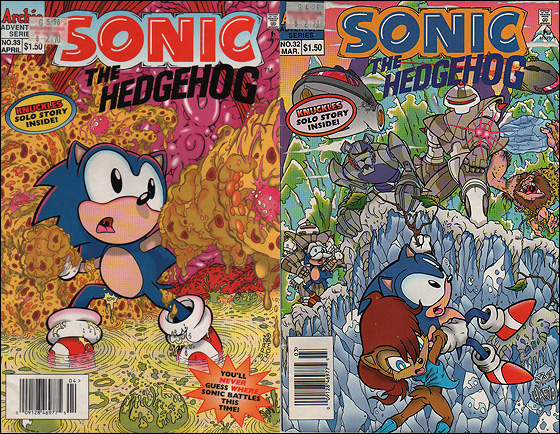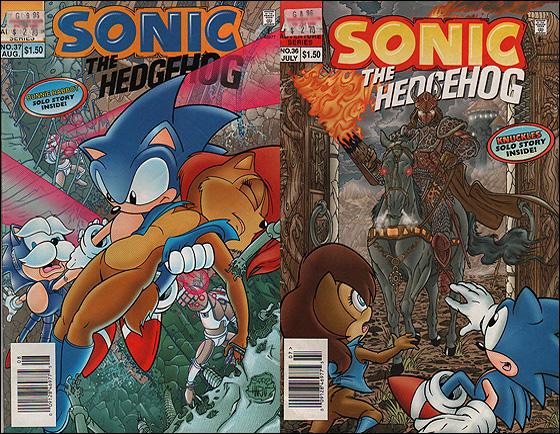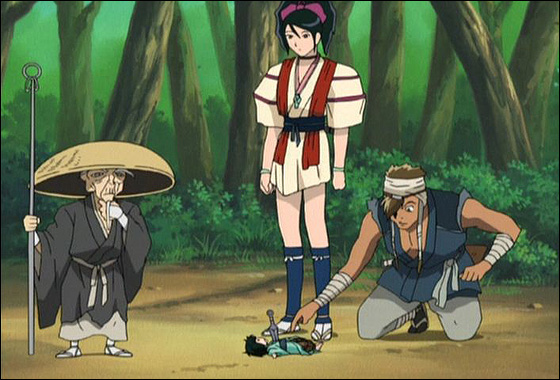Thinking Out Aloud: Borderlands, Designing for Addiction and the Onus of Game Quality Pt.1
May 16th, 2010
(I wrote this editorial ages ago and didn’t post it because it’s kinda dribbly and a mouth piece for my purist tendencies. However, as a rough-edged piece of writing it’s quite good, so after re-evaluating the piece I’ve decided to post it. There are two quite different arguments here, so I’ve split the editorial into two pieces for clarity.)
Lately I’ve found myself flustered and annoyed at the MMO-esque FPS grind-fest commonly known as Borderlands. I hold this game in contempt not because I’ve legitimately played and evaluated the game and through my play time found something to bother over. No. I’m just picking on Borderlands because 1) It’s the ideal wannabe game currently on the market at the moment and by which is easy to pick on 2) What, in my mind at least, it’s come to represent.
Allow me to explain. Here are three like ideas that I’ve inferred from everything I’ve read on Borderlands:
- Borderlands is intrinsically grind-orientated whereby time spent grinding generally acts as a currency for players to exchange for game progression and player development in the form of sifting through the spoils of downed fauna in the improbable hope for quality loot.
- Borderlands is aware of its design and knowingly keeps the player interested in its offering by adding new areas, upgrades, NPCs and so on when the progression may slow into a lull period. These devices are part fundamental, part peripheral to the core playing experience.
- Grinding draws on some innate part of the human brain which demands all patterns be crunched and all stones be turned. Borderlands by its very nature savagely feeds on this fact and even though such games of this nature (ie. Chinese MMOs) can be considered unethical in the way they straddle the mental urges of the player (I’m basing this assertion on Jonathon Blow’s evaluation of World of Warcraft as similar to drugs and the likeness of WoW to Borderlands), we still find this enjoyable and fun.
There’s something discomforting about these observations. Borderlands isn’t a bad game, nor is it poorly designed. People have clearly got a lot of fun out of this game and Gearbox Software appear to have designed the experience in a way that gives the player drive to continue. What bugs me is two things: Isn’t there something wrong with a game that has the player assuming the habitual nature of a bin scab? And although this role is designed effectively, is it responsible design?
I’m trying to take an objective stance here, it’s probably not working, so let me just concede and say that the answers to those questions will determine which side of the argument you’ll likely fall on.
So, if I were to answer these two questions, I’d say: Borderlands uses a model of game design which I consider subordinates players into slavery. It plays on their natural tendencies and there is something bad and impure about it. Perhaps that’s a little harsh, I’m honestly not sure.
This style of design leans heavily on MMORPGs and I wouldn’t dare say that Borderlands stoops to such lows. Nor is it really a low, to be fair. People enjoy what they want out of MMOs and that’s fine, I shouldn’t criticise them for their interests. The player’s mind space that it preys on and the addictive “qualities” of this design are what concern me. I know for a fact that designing for addiction is a topic frequently discussed socially in the MMO-heavy Chinese markets. Discussing this issue with friends and having experienced and been introduced to such games myself, it’s easy to empathise with the belief that developers can in fact design with such malicious intents for the obvious means of profits.
Putting it in such light probably makes my reference to Borderlands moot since the shooter is probably removed from this sort of practice (again, this editorial is fueled by rife assumptions), however it does use the model and for the basis of my argument and something about that bothers me.
My ideas can neatly be summarised by a quote from show Good Game where they begin by commenting on the way players are persuaded into lowly forms of play with a big emphasis on grinding and loot scavenging and then conclude by justifying the first clause with something along the lines of “but it’s just so fun and addictive”. I’ve probably laboured the point by now, but it’s a point I needed to make. I just see it as a rather low way to get your gamer kicks. I’m probably being somehow hypocritical there, but oh well.
Visual Connection: Sonic Comic Covers
May 12th, 2010
I currently have an article in the pipeline regarding trans-media franchising and video games in which I reference my experience with the Sonic the Hedgehog comics in the mid-nineties. You can read more about the long-running series here, here and here. I have quite an affection for these comics as they were really good. I mean, the series has been running for 17 years now, of course it must be good! To preemptively add to my future trans-media games coverage I figured that I’d scan some of my favourite covers and share them with you. The cover art is simply phenomenal, really detailed but not in an off-putting or grotesque manner. Please enjoy the art for the meantime.



Ninja Scroll: The Series Impressions
May 9th, 2010

What I’ve come to appreciate through watching Ninja Scroll: The Series is the expertise of Yoshiaki Kawajiri and Yutaka Minowa, the director and artist of the original Ninja Scroll (1993). Yoshiaki Kawajiri has directed some of my favourite anime productions including the Vampire Hunter D remake Bloodlust, the TV series for X and the neo-noir sex thriller Wicked City. Yutaka Minowa also worked on Vampire Hunter D: Bloodlust and Wicked City, as well as the X movie adaption and the Hellsing-esque Devil May Cry animated series. Despite taking on different roles, the duo share an accommodating sense of style where Yoshiaki Kawajiri’s dark, mistrusting worlds lends themselves to Yutaka Minowa’s diagonally-drawn, pointy-chinned character designs.
Ninja Scroll and Wicked City, two of my favourite titles that Kawajiri and Minowa worked on together, are such interesting movies because their characters sought out their own motives questionable to their roles as heros and villains. Dakuan and Jubei, for instance, may be fighting on the same side, but only because Dakuan poisoned Jubei and baited him with an antidote to lure him into following orders. These characters disobey their hero and antagonist roles to protect their own interests and undermine the viewer, creating sinister worlds filled with only the guilty.
http://www.youtube.com/watch?v=Bt-_MbeDrcY
I rant about Kawajiri and Minowa to set the contrast for Ninja Scroll: The Series which, for all intents and purposes, dumbs the movie’s serious tone down to something akin to a Saturday morning cartoon.
Ninja Scroll: The Series is set in an unrelated, alternative dimension to the movie. Jubei and Dakuan reprise their roles, but meet as strangers with no prior history. Included in the cast are two new protagonists, Shigure and Tsubute who set the kid-friendly tone. Shigure is a young “ninja girl” looking for meaning and strength in her life—a representation of a child entering adulthood. She’s quite a good character compared to the other performances and bears more than a passing resemblance to Momiji from Ninja Gaiden Dragon Sword. Tsubute, on the other hand, is an anime archetype: the young rascal with a tendency to flair up. He naturally provides the comic relief and is voiced by Scott Menville who often plays these sorts of roles.
The premise of the story is very simple. The lone traveler, Jubei, on an elder’s dying wish, is given the mystical dragon stone and told to deliver it to the light maiden Shigure. He soon finds Shigure in an isolated mountainous village and hands her the stone. The stone is seemingly a pendant of misfortune as Shigure’s village is attacked shortly after Jubei hands her the stone. The attackers, from various ninja clans, are in pursuit of the stone, so she flees the village, soon running back into Jubei, accompanied by Dakuan who seems to take pleasure in pestering Jubei. Later Tsubute joins the party and the stone is split in two. The foursome hold on to one half, but lose the other to the Hiruko Clan. The rest of the story follows the merry band’s pursuit to find the other half of the stone while protecting their own from various ninja clans.
Since different clans are doggedly after the dragon stone (for reasons unclear), the majority of the 13 episodes focus on the group defending the stone from various mutant ninja beasts. As such, each episode has largely the same self-contained structure of introducing a new handful of new ninja mutants and concluding with their defeat at the hands of Jubei. It’s a little formulaic, but a reliable template nonetheless.
As you’ve likely gathered from my explanation, there’s little backstory to flesh out why everyone is after this supposedly mystical stone. Each episode just pulls a new slew of derivative, mish-mash villain archetypes who are unflinching in their rage against Jubei. It’s all just pretty mindless really. Because each episode introduces a fresh bevy of goons before quickly removing them from existence, they become disposable fodder in the thirteen episode rotation.
Although the protagonists tend to have some form of dimension to them, the villains are generically churned out, diluting the sinister essence ingrained in the original cast of villains. The introduction scenes for Yoshiaki Kawajiri’s vibrant cast of villains would always give you goosebumps because of their selfish motives and interesting character designs. Here, they’re just random freaks with no texture or detail, spurting “I’m going to kill you, bastard!” lines. It all plays out similarly to a Saturday morning cartoon, creating a disconnect between the adult nature of the content and cartoon presentation.

Several of the villains are unclothed or are designed in sexually suggestive ways, and the majority end up spliced in half, decapitated or stabbed by Jubei’s blade (as much as he prefers pacifism). Throw in a couple of sex scenes, innuendo, tame eroticism and references to S&M culture and it quickly grows into something uncomfortable and uncanny. By appearance, Ninja Scroll: The Series looks like a kids show, yet it contains all of this adult content. Despite being set in feudal Japan, all the characters speak in an unrestrained modern vernacular too.
Through all the slicing and dicing, the relations between the group of protagonists strengthens and the characters do evolve a little which add a layer or two to a fairly vanilla cast. The ninja girl matures into her adult role, the prankster kid learns to be responsible, Dakuan softens up and even though Jubei’s story ends where it began (with him looking for a place to sleep), he gains a little optimism through the whole affair.
There’s a few strange quirks which are difficult to avoid mentioning. The number of key frames in the battle sequences tends to pick up in the final few episodes, leaving the earlier episodes feeling rough and the level of quality throughout uneven. Dakuan’s cells are basic and ugly to look at in comparison to Shigure who seems to glow with an added radiance. In fact, Dakuan’s role overall is strangely played down. He’s completely overshadowed by the younger protagonists and is more of a pest than anything. Even Jubei is kind of overshadowed too. He doesn’t say much and only becomes interesting when he’s slicing heads.
Taking it for the screwed up kids cartoon it is, Ninja Scroll: The Series isn’t so bad. I partly enjoyed this shallower tale, even though I wouldn’t recommend it. It’s worth adding that there’s a substantial amount of extras on the DVDs (interviews, sketches, time lapse drawings for the cover art for each DVD) and usually 4 or 5 episodes per disc, so you won’t feel entirely ripped off. Still, this series doesn’t deserve mention against the work of art that is Yoshiaki Kawajiri and Yutaka Minowa’s original Ninja Scroll. If you haven’t seen that movie, then go rent it out now, otherwise just avoid this mess.



 Game Design Companion: A Critical Analysis of Wario Land 4 - $7.99
Game Design Companion: A Critical Analysis of Wario Land 4 - $7.99 Level Design: Processes and Experiences
Level Design: Processes and Experiences Speed Boost: The Hidden Secrets Behind Arcade Racing Design - $5.99
Speed Boost: The Hidden Secrets Behind Arcade Racing Design - $5.99 Adventures in Games Analysis: Volume I - $5.99
Adventures in Games Analysis: Volume I - $5.99







